Here's everything you need to know about RAGBRAI 2024
- Oops!Something went wrong.Please try again later.
RAGBRAI 51, set for July 21-27, will take riders to some of the most scenic spots in Iowa. Here is what to know about the 2024 ride.
What does RAGBRAI stand for?

RAGBRAI is an acronym for the Register's Annual Great Bicycle Ride Across Iowa. Though begun in 1973, it didn't start using the RAGBRAI moniker until 1975.
What is RAGBRAI?
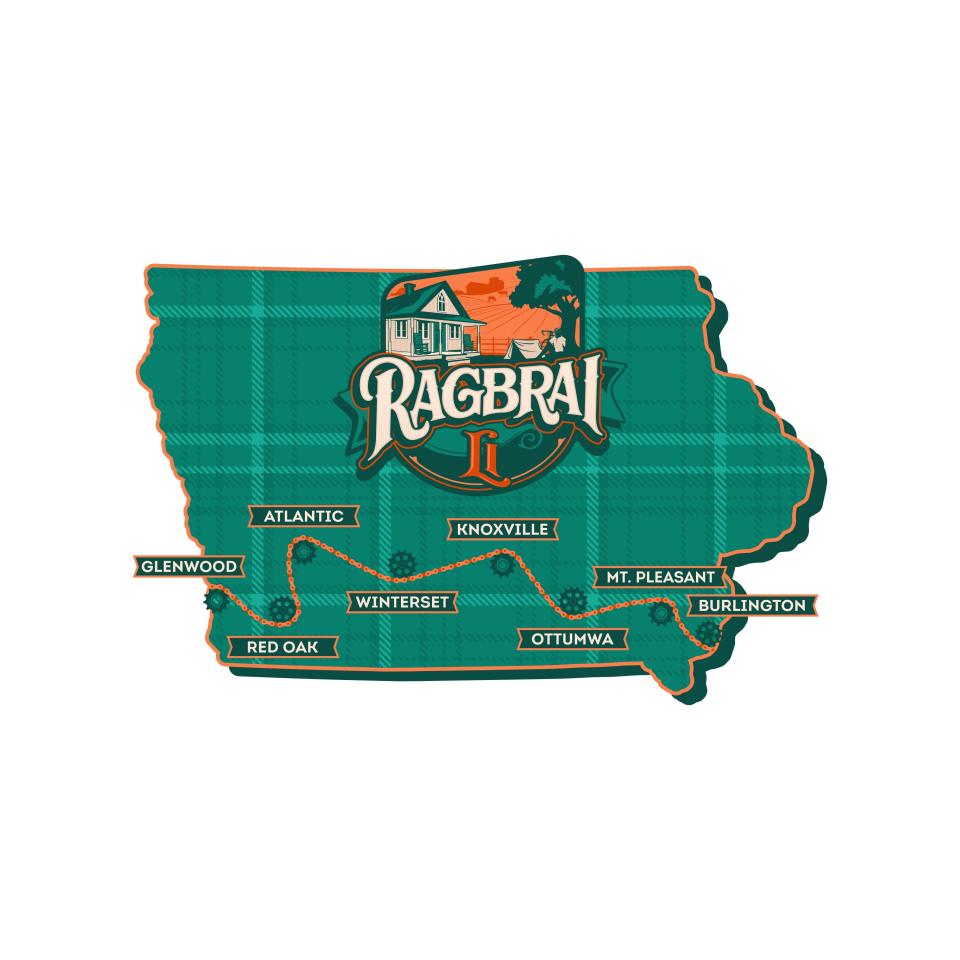
RAGBRAI is a seven-day bicycle ride that always runs from west to east across Iowa. It begins on or near the Missouri River and ends at the Mississippi, taking advantage of the fact that Iowa is bordered by the nation's two longest rivers. The events division of Gannett, the parent company of the Des Moines Register, runs the ride.
How did RAGBRAI start?
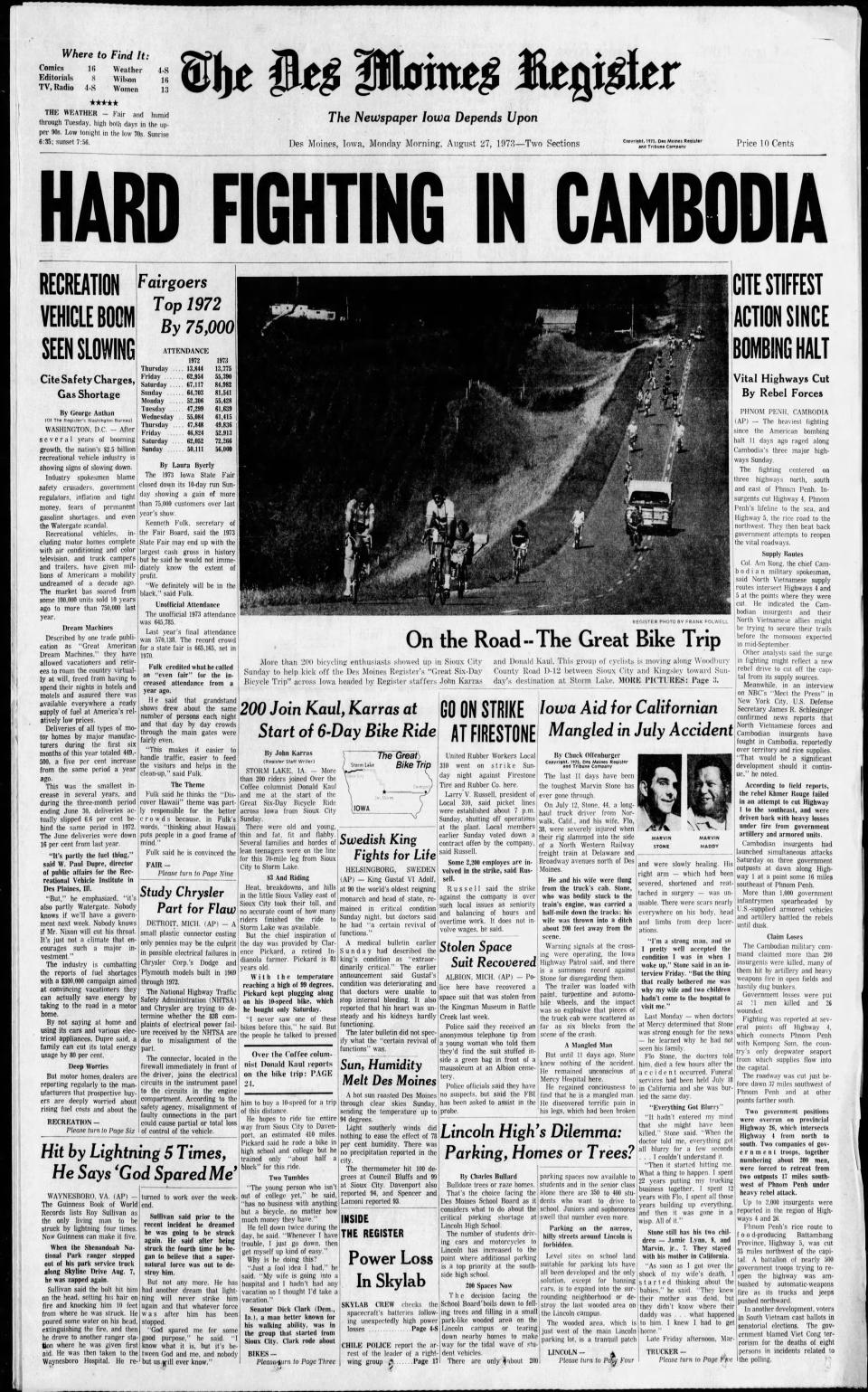
RAGBRAI evolved from an idea by Des Moines Register Washington Columnist Donald Kaul and copy editor and feature writer John Karras. In 1973 they dreamed up what they called The Great Six-Day Bike Trip, a 460-mile, six-day ride from Sioux City to Davenport.
At his editor's behest, Karras invited readers along. When Kaul and Karras arrived in Sioux City on Aug. 26, 1973, there were about 200 riders waiting for them.
They wrote stories along the way about the people they met and sights they saw in small towns across Iowa. Readers were enthralled with tales of the ride and characters like Clarence Pickard, a pith-helmeted, 83-year-old retired farmer who rode the entire way on a used women's bicycle he bought just before the ride.
As RAGBRAI grows from lark to legendary at age 50, it still offers glimpses of 'authentic Iowa'
The Second Annual Great Bicycle Ride Across Iowa, or SAGBRAI, followed in 1974. Karras renamed it the Register's Annual Great Bicycle Ride Across Iowa in 1975. Later, its date shifted permanently to the last full week in July each year.
Since then, RAGBRAI has become a way to show off Iowa and its legendary hospitality to tourists from all 50 states and countries as far away as Australia, Germany and Japan.
When is RAGBRAI 2024?
RAGBRAI will be held July 21-27, a Sunday to a Saturday. Most riders will add an extra night to their trip, gathering on Saturday, July 20, in the starting town, Glenwood, which will hold a daylong festival and bike expo.
How long is RAGBRAI 2024?
It will be 424 miles long. Over the 50 years of the ride so far, routes have averaged about 470 miles, according to RAGBRAI. On six occasions, including last year, the route was more than 500 miles long.
How do you win RAGBRAI?
By having as much fun as you can while moving along at your own pace. As a recreational bicycle tour, not a race, RAGBRAI is open to riders of all ages and abilities. People can ride all seven days or just a few days. Some people go for the whole week but only ride parts of each day.
When will pass-through towns be announced?
Pass-through towns ― communities where riders can pause along the way each day for food, beverages and entertainment ― will be announced in April, along with meeting towns. Those are rough midpoints, one each day, where riders can reunite with companions and support drivers, if they have them. In previous years, pass-through and meeting towns were announced in mid-March. But organizers need more time to line up towns along this year's more sparsely populated route.
Is Iowa hilly?
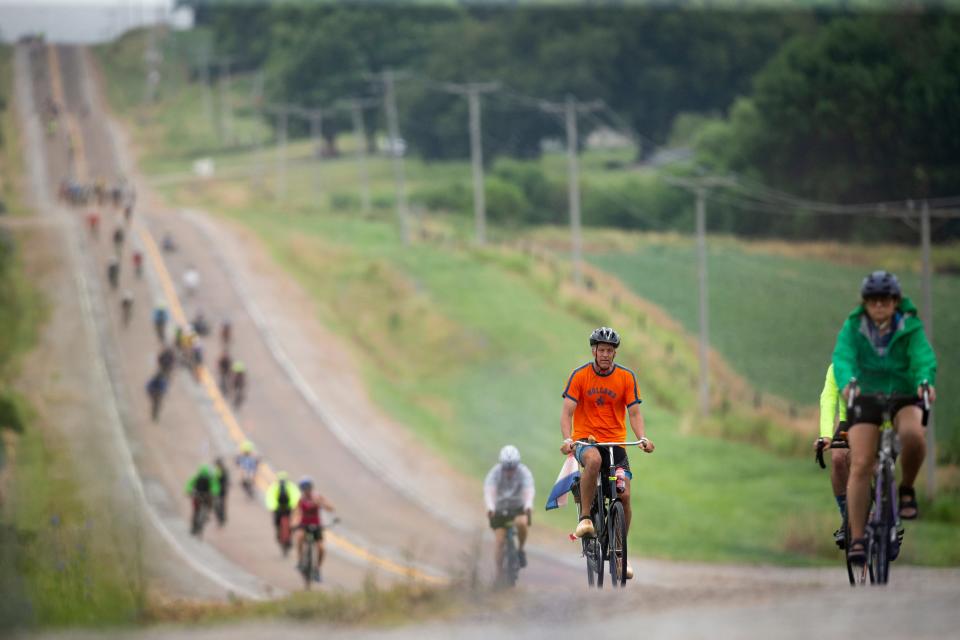
No matter what route the ride takes, there are some serious hills, especially coming in and out of the river valleys. Sometimes, the hills never end. This will be one of those years, with the most feet of climb ― 18,737 ― on record.
Tuesday will be the hilliest day, with 4,384 feet of climb. Friday will be the longest, at 82 miles.
The route and roads are still being finalized. So the projected distances and amount of climb each day may change somewhat between now and July.
Why is the route so hilly?
Iowa was heavily shaped by recurring glaciers. The last period of glaciation, 12,000 to 14,000 years ago, flattened some parts of the state, leading to the mistaken perception that Iowa, like neighboring Nebraska and South Dakota, is one of the Plains states. The glaciation in southern Iowa, however, occurred earlier, and the glacial plains there long since have been eroded by streams and rivers, leaving a furrowed, rolling landscape, according to the University of Iowa.
How to get up hills? 'Spin your way to the top.'
There will be times this year when riders of all abilities will feel as though their lungs are bursting while they grind in the lowest gear on their bikes.
"But remember you’re on a bicycle," says Ride Director Matt Phippen. "You’re not at work. You’re enjoying the scenery of Iowa. You’re making lifelong friends. That will get you to the top. You don’t have to race it. Find the right gear and spin your way to the top."
What will the hardest day be?
Tuesday, at 79 miles, the second-longest journey of the week and with the most climb, 4,384 feet, promises to be challenging. But temperatures, wind strength and direction and other weather factors can play almost as much of a role as topography in determining how hard or easy a ride will be. A gusty head wind can turn a flat road into an ordeal. A strong tailwind can help ease the task of climbing steep slopes.
"I wouldn’t count on good weather showing up that day," Phippen said of Tuesday. "I would do things now to prepare for that long day."
That means get out and ride, early, often and for RAGBRAI-like distances of 70 miles or more, as the months count down.
When will route maps be released?
Route maps will be released in April when the pass-through and meeting towns are announced. They will be updated throughout the summer as roads are finalized.
GPX files with detailed routes for bike computers and smartphone apps will be released in July.
When will the theme days be announced?
Theme days, such as College Jersey Day, will be announced in April.
What are the century loop and gravel-day options?
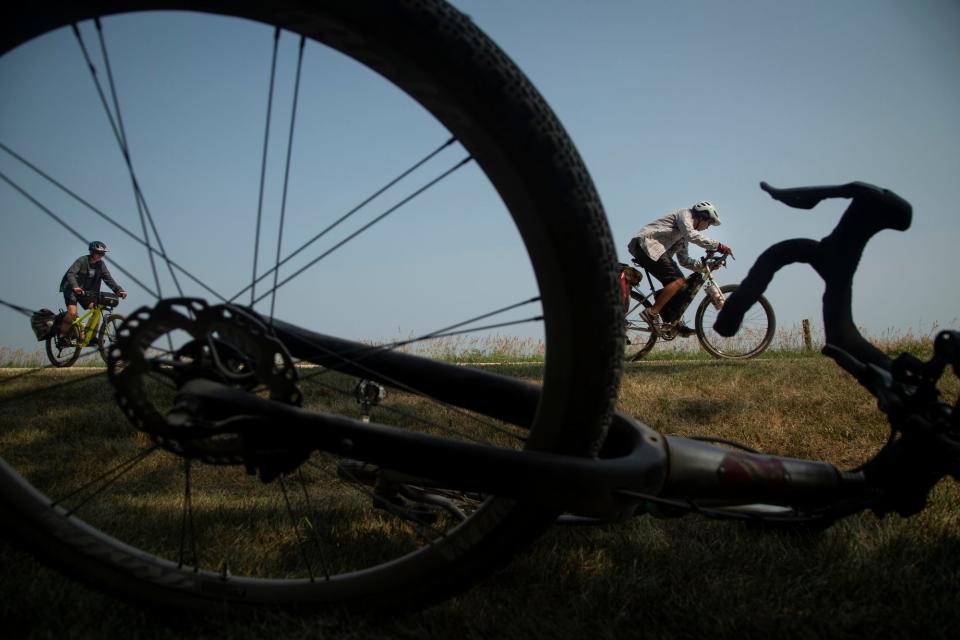
Each year RAGBRAI has one day with an optional century loop, providing riders who choose to take advantage of it enough additional distance to compete a ride of at least 100 miles. Since 2021, one day per week also has a full, optional route on gravel roads that parallel the regular route, taking advantage of Iowa's vast network of unpaved but well-maintained farm roads. The century and gravel days and their routes will be announced in April.
When will vehicle passes go on sale?
Are you planning to drive a support vehicle for riders, or just hoping to participate in the festivities at the meeting or overnight towns? Vehicle passes will go on sale March 15.
How many people are expected?
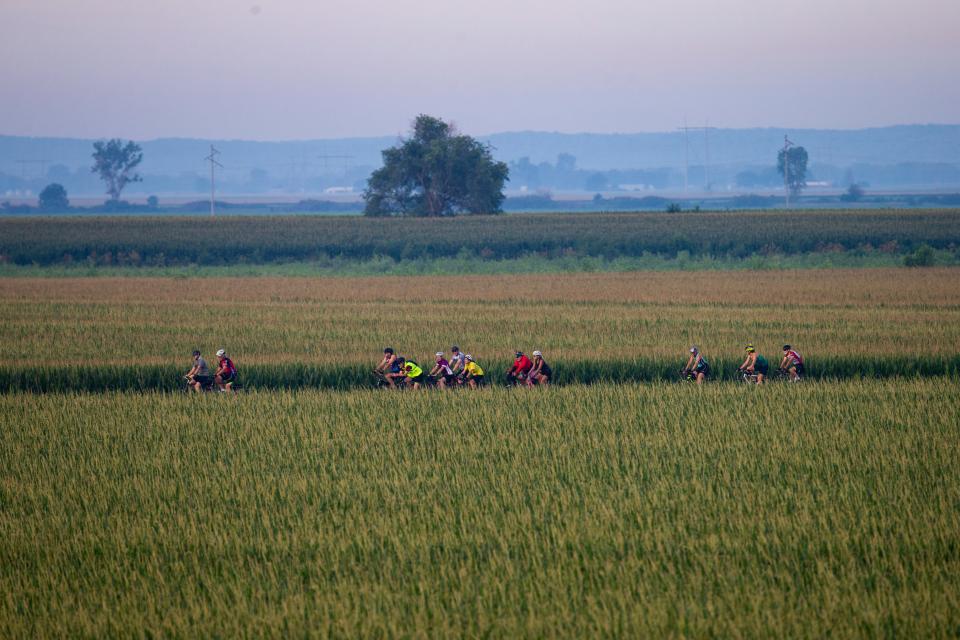
For the historic 50th edition of RAGBRAI in 2023, more than 60,000 people rode on the fourth day, from Ames to Des Moines. But this year is expected to be a regular RAGBRAI. That doesn't mean the crowd will be sparse. In 2022, about 18,000 people registered for single-day and weeklong passes, a lot by RAGBRAI standards, and about 30,000, both registered and unregistered, rode the first day's route from Sergeant Bluff to Ida Grove.
It's not a stretch to imagine an even larger group will join the ride when it enters and leaves the Day 3 overnight town of Winterset on the western edge of the Des Moines metro. And the first day ― July 21, a Sunday, coming out of the Omaha, Nebraska, exurb of Glenwood ― also may draw lots of participants.
If you can join some group rides before RAGBRAI, it will help you master safety-oriented bike etiquette, such as signaling your moves to other riders and warning them about potholes and other potential hazards.
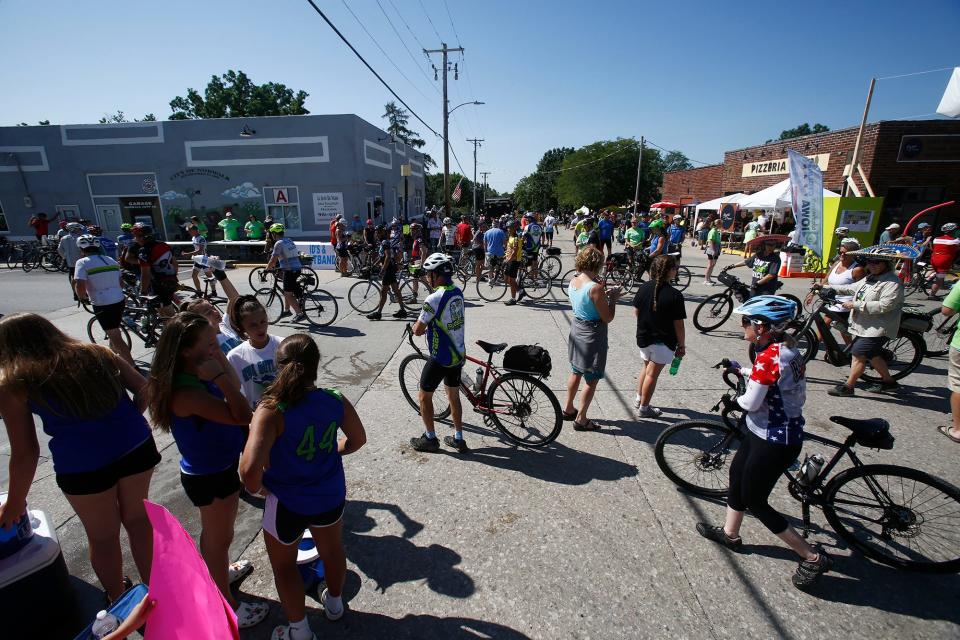
How do I register for RAGBRAI 2024?
People can register online on the RAGBRAI website, ragbrai.com. Under RAGBRAI LI, choose RAGBRAI LI registration.
When is the deadline to register?
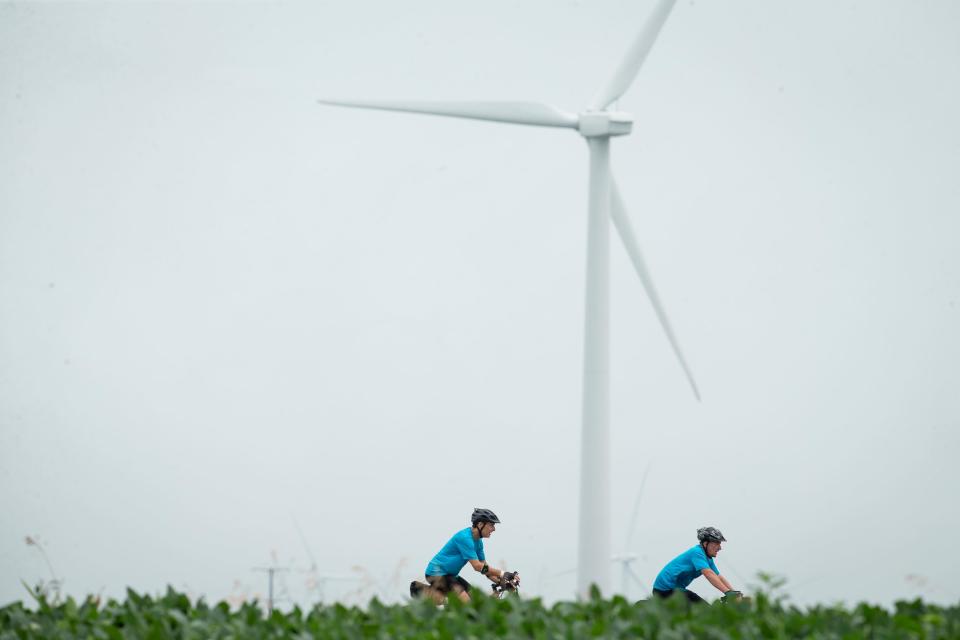
The final deadline for registration is May 15 for weeklong riders, but single-day passes and nonrider wristbands will be available at RAGBRAI merchandise trailers during the ride.
What are the prices for RAGBRAI registration?
$225 through Feb. 29 for weeklong riders. Day passes will be $45.
$250 from March 1 to April 14 for weeklong riders. Day passes will be $50.
$275 from April 15 to May 15 for weeklong riders. Day passes will be $60, the same as when purchased during the ride. No weeklong registrations will be available after May 15
For weeklong non-riders, registration will be:
$50 through April 14.
$60 after that.
New to RAGBRAI? Here's everything rookies need to know before riding across Iowa
What does registration cover?

Generally, registration covers the cost of putting together the route and holding the event, including route marking and traffic control by the Iowa State Patrol. Registered riders also can depend on ambulance and paramedic services in case of accidents, luggage hauling and a ride on a support-and-gear van, or SAG wagon, if they choose not to complete a day's ride. In addition, they will get free commemorative patches.
Registered riders also get discounts on merchandise and repairs, access to long-term parking in the starting or ending town and an array of other advantages.
What kinds of bikes are allowed on RAGBRAI?
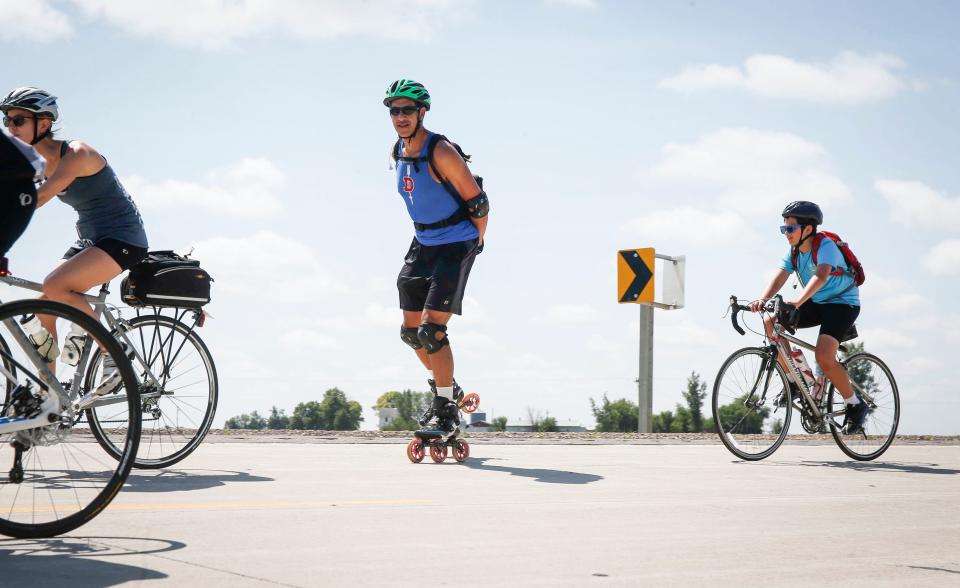
Most riders favor road or gravel bikes, but heavier mountain bikes are far more popular than they once were. Tandems and recumbent bikes are everywhere. Each year there are more electric-assist bikes. A few unicyclists always ride RAGBRAI. Usually a few people ride elliptical bikes. Some non-cyclists come too: rollerbladers, long-boarders and even ultra-marathoners.
Philip Joens has ridden RAGBRAI 18 times and completed the river-to-river trek seven times. He covers retail, real estate and RAGBRAI for the Des Moines Register. He can be reached at 515-284-8184, at pjoens@registermedia.com or on Twitter @Philip_Joens
This article originally appeared on Des Moines Register: RAGBRAI 2024: What riders should know

